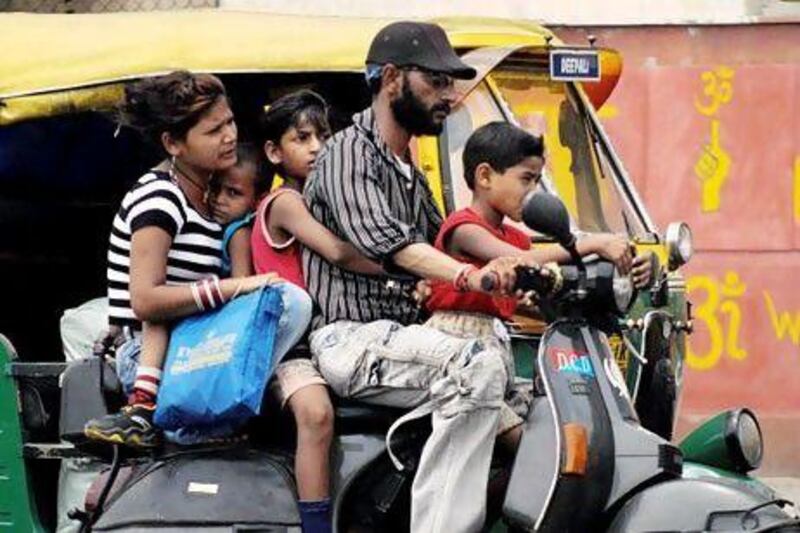In 2008, when India's Tata Group unveiled the Nano, the small, inexpensive car was expected to revolutionise this motor market of a billion-plus people where only eight in every 1,000 own cars.
With the introduction of the US$2,500 (Dh9,182), oval-shaped hatchbackpublicised as the world's cheapest car, millions of two-wheeler-riding Indians, for whom four-wheel drives were out of reach, were expected to upgrade to cars.
The Nano's arrival was supposed to mark the demise of the family-on-a-scooter phenomenon, a common sight on India's congested roads.
But the launch of the Nano and several other car models in recent years has not dented the market for two-wheelers.
The Society of Indian Automobile Manufacturers (Siam), an industry lobby group based in New Delhi, says 2.07 million scooters were sold in the fiscal year that ended on March 31, a nearly 42 per cent jump from 1.46 million in the previous fiscal year. Motorcycles sales stood at 9.02 million for the year that ended on March 31, up nearly 23 per cent from 7.34 million in the previous year.
Last month, demand for two-wheelers rose nearly 16 per cent to more than 880,000 units from 761,000 units in June last year.
Car sales touched a record last year, buoyed by brisk economic growth and strong demand from the country's middle class. Passenger-car sales grew by 25 per cent over the previous year to 2.5 million units, according to Siam.
By 2020, India's car sales growth is expected to roar ahead of China's - which is rising at 6 per cent annually - to make India's car market the world's fastest growing, according to the global consultancy Ernst & Young. Experts predict that by 2050 every sixth car in the world will be produced for the Indian market.
But car sales are slowing this year because of rising fuel prices and tightening financial conditions including 10 increases in interest rates since March last year.
The recent rise in petrol and diesel prices has moved buyers to purchase fuel-efficient two-wheelers, analysts say.
Two-wheelers are also preferred for their manoeuvrability. They can easily navigate the congested, potholed roads packed with handcarts, livestock, bicycles and pedestrians.
After India liberalised its economy in 1991, women began entering the workforce in vast numbers. Enabled by their economic rise, many have bought scooters.
"The target demographic segment for entry-level scooters is women students and professionals," says Abdul Majeed, a vehicle analyst at PricewaterhouseCoopers.
Hero Honda, which is India's biggest two-wheeler manufacturer, recorded its highest ever sales last month - 512,224 units, a 20 per cent jump from 426,453 in June last year.
"The first quarter has set the pace for the rest of the financial year," said Anil Dua, a senior vice president at Hero Honda. "This has put us on course to surpass our guidance of 6 million sales for this fiscal [year]."
Honda recently launched the new Activa, a high-powered scooter with 15 per cent better mileage than the previous version. Sales at TVS Motor, the country's second-largest maker of two-wheelers, climbed 11 per cent to 155,296 units last month from 139,905 in the same month last year.
Motorcycles dominate the two-wheeler market, accounting for 76.4 per cent of all sales of such vehicles. Sales of high-end motorcycles such as Royal Enfield have also grown rapidly. Enfield sold 54,475 units of its cruiser bikes - between 350cc and 500cc - in the fiscal year that ended on March 31, an increase of 8.7 per cent over the previous fiscal year's 50,098 units.
"[Motorcycles are] a category that is growing faster than the overall two-wheeler market," said Venki Padmanabhan, Royal Enfield's chief executive. "We are ramping up production to meet the growing demand."





